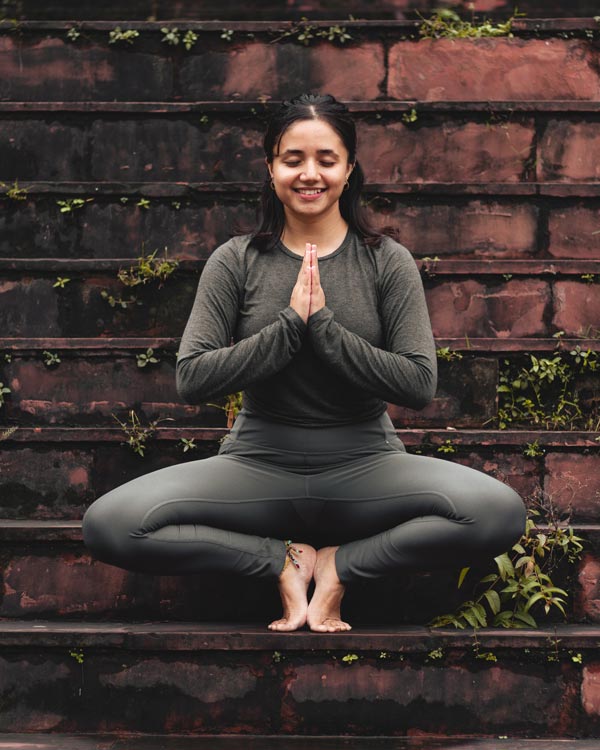Kapalbhati Pranayama (Yoga) – Benefits, How To Do Steps, And Precautions
What is Kapalbhati Yoga?
Kapalbhati is a Shatkarma (cleansing) practice under Hatha Yoga. In simple terms, it is a process that helps to clear toxins from the body. Kapalbhati has a Sanskrit origin, when you break the word down we get, that ‘Kapal’ means ‘Forehead’, and ‘Bhati’ means ‘Shinning’. The practice is called the Skull Shining breathing technique. Out of six purification methods mentioned in Hatha Yoga, the Skull Shining breathing practice has quick and visible benefits.
It is a strong breathing technique that allows your abdomen muscles to become stronger while the internal organs get massaged during the practice. The sweat on the forehead becomes visible after the second round which helps in the process of purification.
Types of Kapalbhati
1. Vatkrama – the practice is similar to the pranayama technique of Bhastrika, except the exhalation is active while the inhalation is passive.
2. Vyutkrama – the practice is similar to Jal neti when you pour the water through your nostrils and let it out of your mouth through a spit.
3. Sheetkrama – this practice is considered reverse to Vyuktakrama where you take water through the mouth but secrete it through the nose.
How to practice Kapalbhati?
- To begin the practice, sit in Vajrasana with your buttocks over the heels while kneeling down or in a simple Sukhasana (cross-legged position), and keep your spine straight.
- Place your palms on the knees center your breath and when you are ready, take a gentle inhale and begin with forceful exhalation while pulling your navel towards the spine.
- Continue with passive inhalation and forceful exhalation for 20 counts and then neutralize your breath.
- After 2 sets of 30 counts each, there will come a moment where you are neither inhaling nor exhaling, which will be a statement of calmness within the lungs. This is a natural result of forceful exhalation through the lungs.
The goal is to keep the exhalation forceful while massaging all the internal organs.
What are the Benefits of Kapalbhati Pranayama in Yoga?
- Improves the blood circulation in the body and brings about a glow on the face
- Helps to reduce belly fat
- Improves the metabolism, and digestion
- Clears out excess nasal phlegm
- Activates the Pingla Nadi (Sun energy)
- Boosts the nervous system
- Helps to increasse focus
Side Effects of Kapalbhati Yoga
- Avoid for people with High blood pressure
- Women who are menstruating can avoid in the initial days of the cycle
- People suffering from Epilepsy, Hernia, or have recently gone under abdominal surgery
- Avoid for People with Hypertension
- Pregnant women should avoid practicing it.
FAQs
Can we perform Kapalbhati in the evening?
The timing can be either in the morning or evening to practice Kapalbhati on an empty stomach. Although it is preferred to practice early in the morning to activate Pingla Nadi
How many counts should be there while practicing daily Kapalbhati?
For beginners, the practice can be divided into two sets with 30 counts each. Gradually, a practitioner can increase the number of counts and sets of Kapalbhati while sitting in Vajrasana.
Can we perform Kapalbhati while lying down?
No, Kapalbhati should be practiced in either Vajrasana with the spine upright or a simple cross-legged position.
Can children below the age of 15 practice Kapalbhati?
Yes, children can practice Kapalbhati under the guidance of a yoga teacher to make sure the practice is being performed accurately.
Should you practice Kapalbhati every day?
The practice of Kapalbhati need not be performed every day as it is heating pranayama that can cause an increased level of Vatt in the body. The practice can be done every alternate day.







